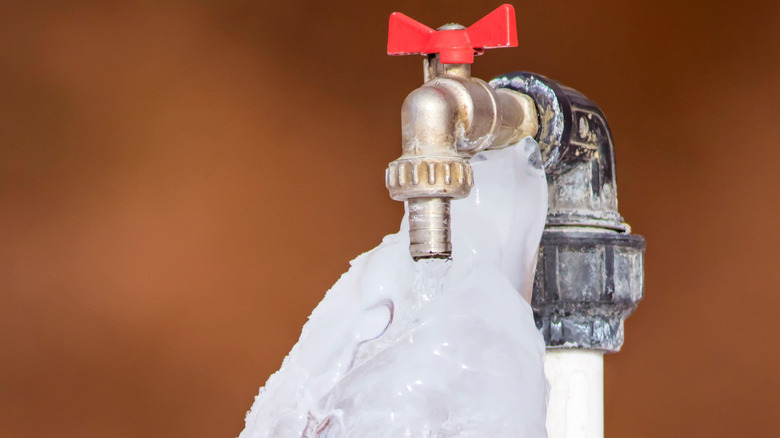Tips to Protect Pipes from Freezing: Professional Tips
Tips to Protect Pipes from Freezing: Professional Tips
Blog Article
Are you trying to locate advice concerning How to Prevent Your Pipes From Freezing?

Cold weather can damage your pipes, especially by freezing pipelines. Here's how to stop it from happening and what to do if it does.
Intro
As temperature levels drop, the risk of frozen pipelines increases, possibly causing expensive repairs and water damages. Understanding how to prevent frozen pipes is vital for homeowners in chilly environments.
Prevention Tips
Protecting susceptible pipes
Cover pipelines in insulation sleeves or make use of warm tape to protect them from freezing temperature levels. Focus on pipelines in unheated or exterior locations of the home.
Home heating strategies
Keep interior areas appropriately heated up, particularly areas with plumbing. Open up cupboard doors to allow cozy air to circulate around pipelines under sinks.
Exactly how to recognize icy pipes
Seek lowered water circulation from taps, uncommon odors or sounds from pipelines, and noticeable frost on subjected pipelines.
Long-Term Solutions
Architectural modifications
Think about rerouting pipelines far from outside wall surfaces or unheated locations. Add additional insulation to attics, cellars, and crawl spaces.
Upgrading insulation
Buy premium insulation for pipes, attics, and walls. Correct insulation assists keep regular temperature levels and lowers the danger of frozen pipelines.
Protecting Outside Pipes
Yard hoses and outdoor faucets
Disconnect and drain yard tubes before winter. Set up frost-proof faucets or cover outside taps with protected caps.
Comprehending Icy Pipes
What triggers pipelines to freeze?
Pipes freeze when exposed to temperatures listed below 32 ° F (0 ° C) for expanded periods. As water inside the pipelines ices up, it increases, taxing the pipeline walls and potentially causing them to burst.
Risks and problems
Icy pipelines can lead to supply of water disturbances, home damages, and pricey repair work. Ruptured pipes can flood homes and trigger considerable structural damages.
Indications of Frozen Piping
Recognizing icy pipelines early can prevent them from breaking.
What to Do If Your Pipes Freeze
Immediate activities to take
If you think frozen pipelines, keep faucets open to alleviate pressure as the ice melts. Make use of a hairdryer or towels taken in warm water to thaw pipes gradually.
Conclusion
Avoiding frozen pipelines needs proactive procedures and fast actions. By comprehending the reasons, signs, and safety nets, homeowners can safeguard their pipes throughout cold weather.
5 Ways to Prevent Frozen Pipes
Drain Outdoor Faucets and Disconnect Hoses
First, close the shut-off valve that controls the flow of water in the pipe to your outdoor faucet. Then, head outside to disconnect and drain your hose and open the outdoor faucet to allow the water to completely drain out of the line. Turn off the faucet when done. Finally, head back to the shut-off valve and drain the remaining water inside the pipe into a bucket or container. Additionally, if you have a home irrigation system, you should consider hiring an expert to clear the system of water each year.
Insulate Pipes
One of the best and most cost-effective methods for preventing frozen water pipes is to wrap your pipes with insulation. This is especially important for areas in your home that aren’t exposed to heat, such as an attic. We suggest using foam sleeves, which can typically be found at your local hardware store.
Keep Heat Running at 65
Your pipes are located inside your walls, and the temperature there is much colder than the rest of the house. To prevent your pipes from freezing, The Insurance Information Institute suggests that you keep your home heated to at least 65 degrees, even when traveling. You may want to invest in smart devices that can keep an eye on the temperature in your home while you’re away.
Leave Water Dripping
Moving water — even a small trickle — can prevent ice from forming inside your pipes. When freezing temps are imminent, start a drip of water from all faucets that serve exposed pipes. Leaving a few faucets running will also help relieve pressure inside the pipes and help prevent a rupture if the water inside freezes.
Open Cupboard Doors
Warm your kitchen and bathroom pipes by opening cupboards and vanities. You should also leave your interior doors ajar to help warm air circulate evenly throughout your home.

Do you appreciate more info about How to Prevent Your Pipes From Freezing? Post feedback down below. We will be glad to hear your suggestions about this blog post. Hoping that you visit us again in the future. Do you know another person who is curious about Helpful Tips to Prevent Frozen Pipes this Winter? Please feel free to share it. Thank you for going through it.
Need Help? Hire Us Now! Report this page